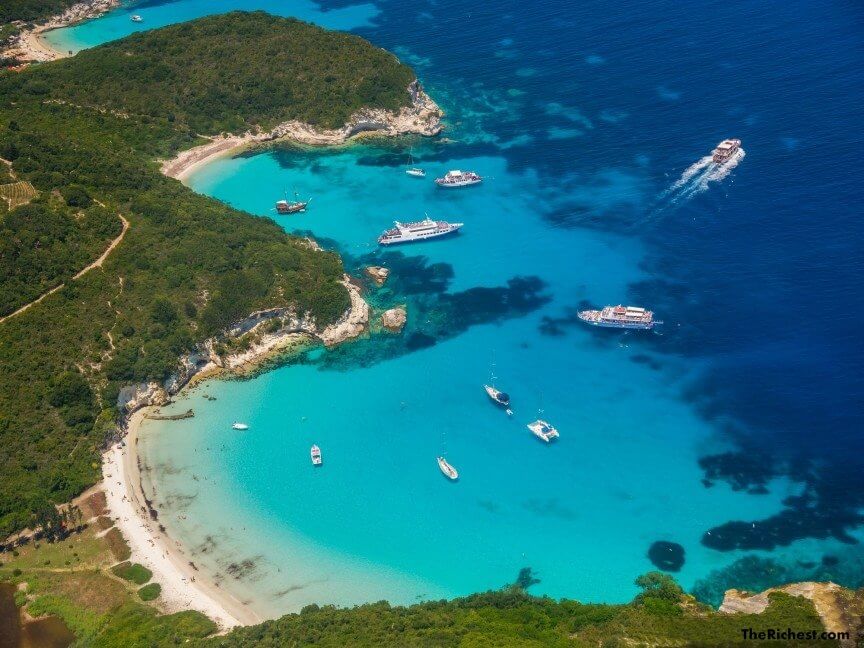Arriving in Paxos, the first thing to see is Gaios, the capital of the island, which is naturally protected by two islets, Panagia and Agios Nikolaos and forms an impressive fjord, changing the classical port image that we have in mind.
Gaios, like the whole island, is marked by dense vegetation and traditional houses with tiles, which help to preserve the authenticity of the place, despite the tourist development. Most dining and entertainment venues are located in this area, with many of them encircling the Venetian Square.
Daily excursions to Paxoi and Antipaxoi are organized daily from Sivota for the visitor to admire picturesque villages with vibrant island color.
In Gaius you will find the castle of St. Nicholas, in the homonymous islet, the Monastery of Panagia on the small island, the Museum of Paxos where the resolution is hosted for the annexation of the Ionian Islands to the Greek state in 1864, while the blue beaches -or "spiantzes" in the local dialect with the Italian folklore - await you for diving Kloni Gouli, Kamiini, Kaki Lagkada. What you should keep in mind Paxos is that most beaches are not sandy,and you must go through many large stones to dive in the crystal clear turquoise waters that surround the island.
Antipaxoi: a bright turquoise background
If you reach Paxos and do not take the boat from Gaios to go to Antipaxos you will have committed a mistake. The reason is that the two beaches that are there, Vrika and Voutomi look like a fairy tale. Their color is bright turquoise combined with white sand (here the scenery changes from Paxos stones) and green background creates an incredible spectacle.

